![]()
![]()
GRIMM'S LAW OF LAUTVERSCHIEBUNG ("SOUND SHIFT")
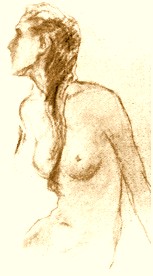
A Y A
by Thomas V. Gamkrelidze and V. V. Ivanov
Scientific American, March 1990, P.110
In their reconstruction of the ancestral Indo-European language, the early linguists relied heavily on Grimm's law of Lautverschiebung (" sound shift"), which postulated that sets of consonants displace one another over time in predictable and regular fashion. The law was posed in 1822 by Jacob Grimm, who is more widely famed for the anthology of fairy tales he wrote with his brother, Wilhelm. Grimm's law explained, among other things, why in the Germanic languages certain hard consonants had persisted despite their universal tendency to yield to soft ones. The set of softer "voiced" consonants "b," "d," "g" (followed by momentary vibration of the vocal cords), posited in the protolanguage, had apparently given way to the corresponding hard set "p," "t," "k." According to Grimm's law, this had come about by "devoicing" those consonants ("p," for example, is unaccompanied by vocal vibration). Thus, the Sanskrit char is seen as an archaic form of the English "draw," which is itself more archaic than the German tragen (all of which mean "to pull").

These rules were used to reconstruct an Indo-European vocabulary that implies how its speakers lived.
The words described a landscape and climate that linguists originally placed
in Europe between the Alps in the south and the Baltic and North seas in the
north [see "The Indo-European Language," by Paul Thieme; Scientific American,
October, 1958].

THE MIGRATIONS OF THE PROTO INDO-EUROPEANS FROM ARMENIA
More recent evidence now places the probable origin of the Indo-European language in western Asia. Three generations of archaeologists and linguists have thus far excavated and deciphered manuscripts in close to a dozen ancient languages from sites in modern Turkey and as far east as Tocharia, in modern Turkestan. Their observations, together with new ideas in pure linguistic theory, have made it necessary to revise the canons of linguistic evolution.

ARMENIAN WARRIOR'S SIGNAL BUGLE MADE FROM
DEER'S HORNS. LAKE SEVAN BASIN. SECOND MILLENNIUM BC.
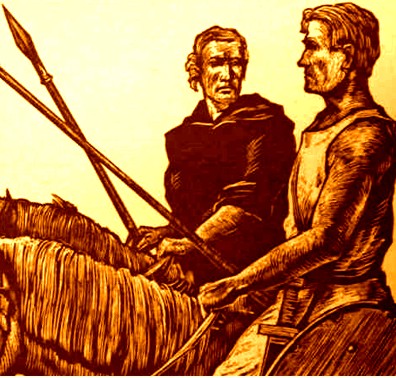
ARMAN INDO-EUROPEAN CIVILIZATION WAS CARRIED THROUGHOUT THE WORLD
BY THE CAVALIERS OF THE AYRUDZI [LIT. HORSEMEN].
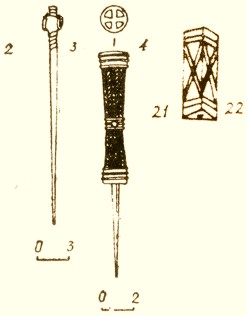
ITEMS FOUND IN A WARRIOR'S TOMB THAT
WERE KEPT IN HIS BELT AND WERE
HANDY TOOLS FOR EVERYDAY USE
DECORATED WITH SACRED EMBLEMS.
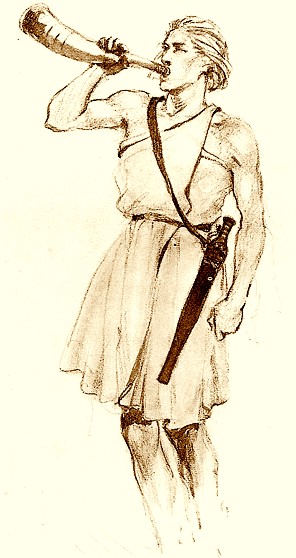
THE BUGLE OF ARIES [ARAM...RAM NATIVE TO AND SYMBOLIC
OF ARMENIAN HIGHLAND...HENCE THE COSMIC SPIRAL/PILLAR...KHOYAK]
HERALDED DURING THE HOUSE OF ARIES [SUCCEEDING TAURUS/BULL/HOLY COW].
The landscape described by the protolanguage as now resolved must lie somewhere in the crescent that curves around the southern shores of the Black Sea, south from the Balkan peninsula, east across ancient Anatolia (today the non-European territories of Turkey) and north to the Caucasus Mountains [see illustration below]. Here the agricultural revolution created the food surplus that impelled the Indo-Europeans to found villages and city-states from which, about 6,000 years ago, they began their migrations over the Eurasian continent and into history.
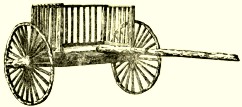
A PULLING CART THAT COULD CARRY PASSENGERS AS WELL AS CARGO.
FROM THE LCHASHEN DIG. BEGINNING OF SECOND MILLENNIUM B.C.
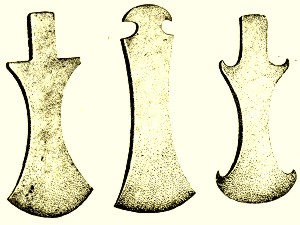
BATTLE AXES. SECOND MILLENNIUM BC.
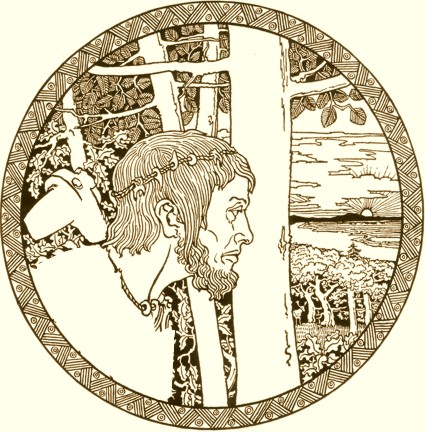
Some of the migrants invaded Anatolia from the East around 2000 B.C. and established the Hittite kingdom, which held all of Anatolia in its power by 1400 B.C. Its official language was among the first of the Indo-European languages to find its way into writing. Early in this century, Bedrich Hrozny, a linguist at Vienna University and later at Charles University in Prague, deciphered Hittite inscriptions (written in cuneiform, the ancient writing system based on wedge-shaped symbols) on tablets that had been found in the library of the capital at Hattusas, 200 kilometers east of modern Ankara.

DRINKING GOBLET IN A FORM OF A SHOE.

ARMIN WARRIOR ARMLET AND THE CRESCENT SHAPED
DECORATED CHEST MEDALLION [NOTE HEAVEN + EARTH].
SIWNIK‛ [NAMED AFTER SUN GOD - SIWINI, AS LATE AS
THE MIDDLE AGES
STILL A RENOWNED GNOSTIC ARMAN TONDRAKITE-PAULICIAN [PAYLIKEAN] -
AREVORDI-ARORDI STRONGHOLD, FROM VAYK TO KAPAN-GORIS TO AREVIK‛
[LIT. SUNNY] PROVINCE AND THE CENTER IN MEŁRI LIT. HONEY/BEE... PRIMAL
ASTRONOMICAL KARAHUNJ/ STONEHENGE CA. 7,000 BC] SECOND MILLENNIUM BC.
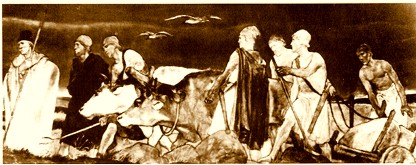
The library also contained cuneiform tablets in two related languages: Luwian and Palaic. The evolution of Luwian could be traced in later hieroglyphic inscriptions made around 1200 B.C., after the fall of the Hittite Empire. To this emerging family of Anatolian languages linguists added Lydian (closer to Hittite) and Lycian (closer to Luwian), known from inscriptions dating back to late in the first millennium B.C.
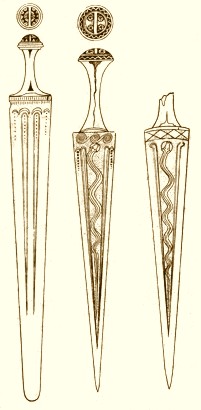
ARMENIAN WARRIORS' SWORDS DECORATED WITH SERPENTINE ART.
ŠIRAK. SECOND MILLENNIUM BC.
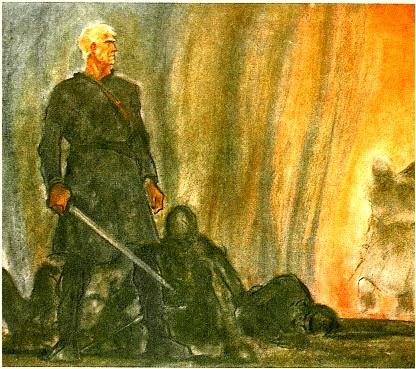
The appearance of Hittite and other Anatolian languages at the turn of the third to the second millennium B.C. sets an absolute chronological limit for the breakup of the Indo-European protolanguage. Because the Anatolian protolanguage had already fissioned into daughter languages by that point, investigators estimate that it departed from the parent Indo-European no later than the fourth millennium B.C. and possibly much earlier.